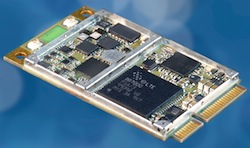Ericsson’s stated desire to be the number three player in the thin modem market within the next two years is unrealistic, according to one analyst.
Alongside its partner STMicroelectonics, the Sweden-based vendor has announced that its ST-Ericsson joint venture will be split up over the course of this year, after a series of disappointing financial results and the resignation of CEO Didier Lamouche last week.
Following the split, ST will handle the NovaThor integrated apps processors, RF, Power Management and existing products such as the legacy modem business.
Ericsson, meanwhile, will take over the design, development and sales of the 2G/3G/4G/LTE multimode thin modems, namely the Thor LTE/HSPA+/TD range.
According to a recent report from research firm Forward Concepts, Qualcomm is currently the market leader in the LTE thin modem chip market.
In 2012, 47 million FDD-LTE mobile phone modems were shipped, with Qualcomm gaining 86 percent of the market, followed by Samsung with just nine percent and GCT Semiconductor, which provides modems for LG handsets, at three percent.
Nvidia-Icera and Renesas Mobile, which has a presence in Fujitsu devices, tied at one percent each.
Ericsson has said that it wants to be the number three player during the next 18-24 months, but Strategy Analytics senior analyst Sravan Kundojjala said this is unrealistic.
“To achieve the number three position, Ericsson would have to score iPhone or Galaxy S design-wins as the market for slim modems is relatively limited outside of Apple and Samsung,” he said.
Baseband-integrated applications processors dominated the smartphone modem market with 62 percent unit share in Q3 2012, according to Strategy Analytics estimates.
Qualcomm and Intel are currently the dominant players in the 3G / 4G multimode baseband modem market, but Intel is not planning to integrate its modems with LTE until 2014.
Said Kundojjala: “Ericsson could potentially pursue M2M, USB dongles, tablets and other non-handset markets as an opportunity to expand its thin modem business, but this would put it in direct competition with Intel and many small, innovative LTE baseband suppliers such as Sequans, Altair and GCT Semi.”
Further, Kundojjala added that there has been a lack of buyers for ST-Ericsson’s modem business and feels that the thin modem business is not a “long-term fit” for Ericsson.
“In retrospect, we think that Ericsson and ST Micro’s venture to create a European cellular chip powerhouse was always going to be a challenge, one that ultimately ended in failure, not just because of the difficulty of integrating disparate cultures from different companies, but also because the formation of ST-Ericsson coincided with a drastic decline in the joint-venture’s top customers, Nokia and Sony Ericsson,” he said.



